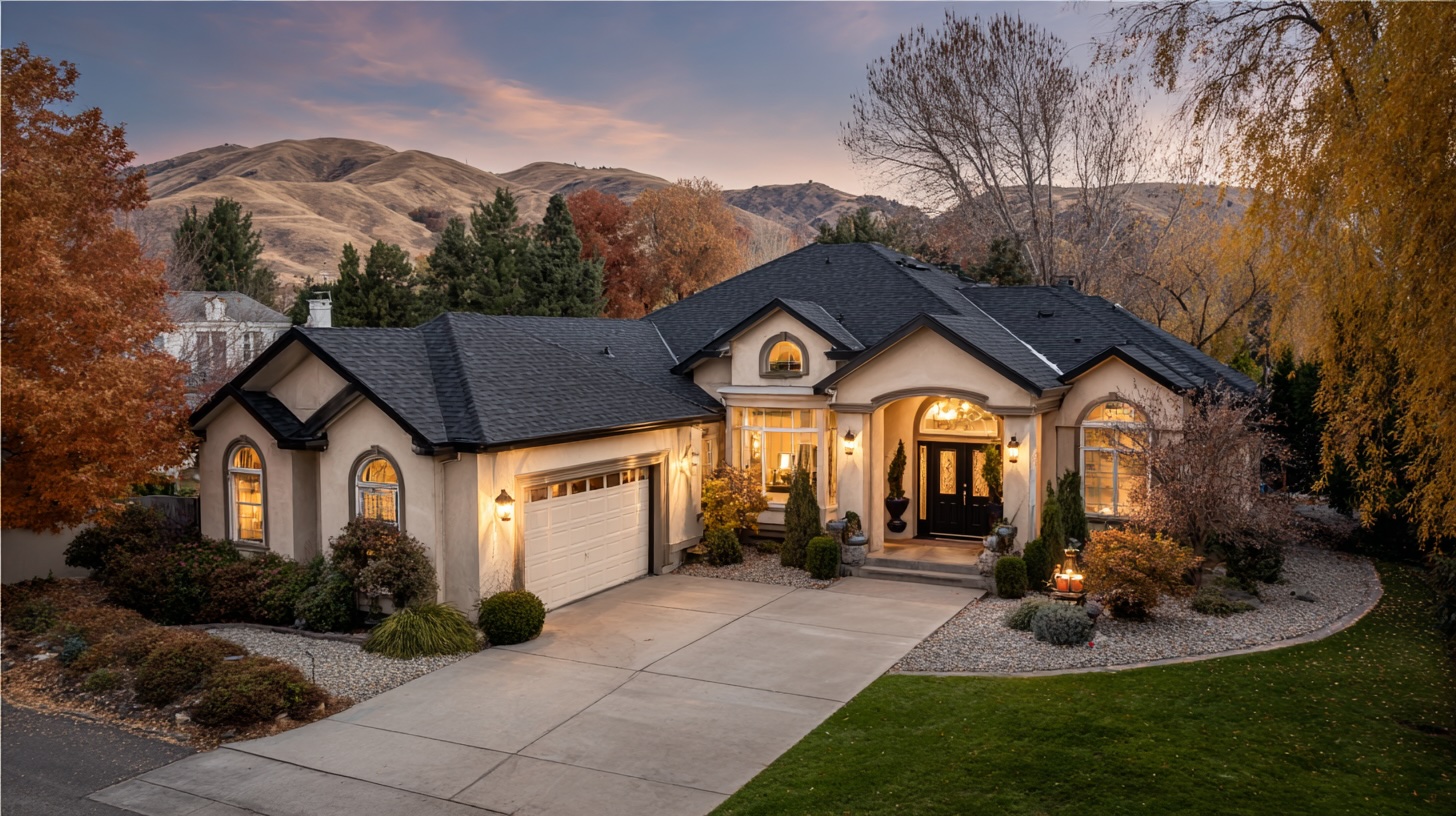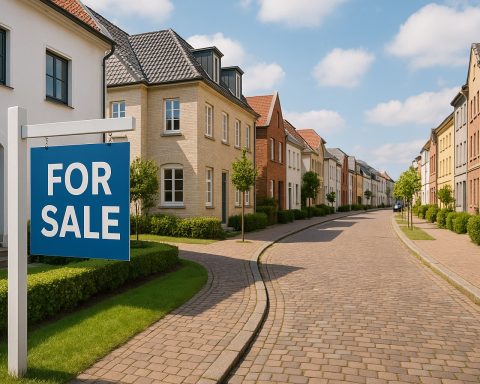Boise’s housing market in 2025 is characterized by steady, but not frenzied, growth. After pandemic-era surges, median home prices are hovering around the $500K mark with modest year-over-year gains. For example, Zillow reports an April 2025 average home value of $504,848 (up 1.9% from a year ago) zillow.com, and Redfin shows a $500K median sale price in April 2025 (up 2.2% YoY) redfin.com. Home sales remain strong but not explosive (220 homes sold in April 2025, down from 250 a year earlier redfin.com), and new listings are gradually increasing. Months-supply is still low – about 2.4 months of inventory in Dec 2024 weknowboise.com – so buyers face competition, though it’s less intense than in 2020–21. Homes still move relatively quickly (around 12–14 days on market in spring 2025 redfin.com templetonrealestategroup.com), and median sale-to-list ratios are near parity. Rents in Boise remain high and rising: Zillow’s data shows an average rent of $1,809 in April 2025 (roughly 2.2% above last year) zillow.com. In summary, Boise’s residential market is tight but stabilizing – prices and rents are near record highs but growing only in low single digits as inventory slowly ticks upward.
- Median Home Price: Boise’s median sale price is roughly $500K (April 2025) redfin.com. Zillow’s Home Values Index puts the typical home at $504,848 (up 1.9% YoY) zillow.com. Ada County (Boise metro) saw a median home price of ~$525K in late 2024 weknowboise.com, slightly below its 2022 peak.
- Sales & Inventory: Listings are growing: ~2,568 homes on the market in the Treasure Valley (Dec 2024), up 16% from a year ago weknowboise.com (≈2.4 months supply). Despite more supply, pending sales are also rising, suggesting demand still absorbs much of it. To truly balance the market, analysts say inventory would need to jump by roughly 65% weknowboise.com.
- Days on Market: Homes sell in under two weeks on average. Redfin reports 12 days on market (Apr 2025) redfin.com. WeKnowBoise notes a median ~14 days in spring 2025. That is slower than the 10-day frenzy of 2021–22, but still indicates brisk demand.
- Rental Rates: Rents are around $1,800–$1,900 for the average unit. Zillow’s April 2025 index shows $1,809average rent in Boise zillow.com (vs $2,024 nationally). Rents have jumped in the past year (Zillow +2.2% YoY; other trackers note ~10–12% growth by late 2024 weknowboise.com). Vacancy rates are very low (around 1.6% in 2024 weknowboise.com), so landlords still command premium rents.
Commercial & Multifamily Trends
Boise’s commercial real estate remains healthy, with industrial and retail sectors especially strong. Local data show the industrial market is in boom mode: about 56.4 million sq ft of industrial space exists (Q3 2024), with vacancy ~8.3% crexi.com. Despite some new construction, absorption is very high (roughly 1.66 million sq ft leased YTD through Q3 2024) crexi.com. Median industrial lease rates are low (around $13/sf/yr) but investors see yield, as Crexi reports recent industrial sales with cap rates ~6–7% crexi.com. The office market is more mixed: 17.3M sq ft inventory with ~10.2% vacancy crexi.com. Some submarkets (finance, tech, healthcare tenants) still see healthy leasing, but overall office absorption is slightly negative (-445k sq ft YTD) crexi.com as remote work tempers demand.
Retail is robust: Boise’s retail inventory is ~25.35M sq ft with an extremely low 3.3% vacancy crexi.com. Nampa and Meridian submarkets are especially tight (Nampa ~6.9% vacancy) crexi.com, and national chains continue to expand here. Crexi notes strong recent retail deals (e.g. grocery and discount stores) crexi.com. In sum, commercial demand – driven by population growth and tourism – is fueling new projects (notably around the airport and in Canyon County) crexi.com.
Multifamily is likewise busy. Boise’s apartment occupancy is about 94–95% (Q3 2024) crexi.com. Average effective rent is ~$1,595/month crexi.com (lower than single-family rent but very affordable nationally). Construction of apartments is at record pace: roughly 3,064 units were under construction in late 2024 (deliveries ~861 units that year) crexi.com crexi.com. Vacancies in new complexes remain below 6%, indicating most units find tenants quickly. High occupancy and strong cash flow keep apartment buildings attractive to investors.
- Industrial: ~56.4M sqft, 8.3% vacancy, ~1.66M sqft absorption YTD (Q3 2024) crexi.com crexi.com. Key new leases include large warehouses (Excel Inc, Costco, etc.) crexi.com. Under construction: ~2.0M sqft (for logistics/distribution) crexi.com.
- Office: ~17.3M sqft, 10.2% vacancy crexi.com. Recent net absorption is slightly negative (-445k sqft YTD) crexi.com. Leasing demand is focused in west-side and downtown submarkets. Notable recent leases (e.g. law firms) point to continued (if slower) demand crexi.com crexi.com.
- Retail: ~25.35M sqft, very low 3.3% vacancy crexi.com. YTD absorption ~332,736 sqft, led by grocery and big-box leases crexi.com. New retail developments are concentrated in Meridian, Nampa and Boise’s airport/Caldwell corridors crexi.com.
- Multifamily: Total ~36,000 units (Boise metro); 5.4% vacancy crexi.com. Avg. rent ~$1,595 crexi.com. Nearly 861 units delivered in 2024 and 3,064 under construction crexi.com crexi.com – a record pipeline. Rising supply should eventually ease rent growth (current rent growth ~0.1% YOY crexi.com), but demand remains strong.
Construction & Development Trends
New construction has ramped up to meet demand, but still lags a bit in the city core. Ada County issued about 5,137 new housing permits in 2024 fred.stlouisfed.org – down from 6,089 in 2023 and a peak of 7,487 in 2021. This indicates a recent slowdown in single-family starts. The City of Boise itself has permitted fewer units than forecasted – roughly 300–800 units short per year over the last three years cityofboise.org. That shortfall helps explain why prices have remained elevated. Much of new development is now townhomes and apartments (“missing middle”): 52% of all new permits in Ada County (2019–2022) were multi-family or small attached homes, up from just 31% in 2018–20 cityofboise.org.
- Building Permits: Ada County new housing permits fell to ~5,137 in 2024 (vs 6,089 in 2023 and 7,487 in 2021) fred.stlouisfed.org. City-wide (Boise) unit delivery remains slightly below long-term demand.
- Housing Types: Multifamily and “missing-middle” housing now dominate new builds (52% of permits, 2019–22) cityofboise.org. Over a third of all new units since 2019 are in downtown and West Bench areas cityofboise.org, reflecting infill and higher-density projects.
- Subdivisions: Outside the core, new subdivisions continue to appear. Build Idaho data (2025 report) notes ~305 new subdivisions in the region (5,400+ homes sold), underscoring that suburban growth (Meridian, Kuna, Star) still fuels supply.
- Costs & Delays: Construction costs remain a hurdle – up 40% nationally since 2018 cityofboise.org – which slows production of affordable units. Infrastructure projects also take time: for example, Idaho’s Highway 16 extension (connecting to I-84) began in 2006 and is still being built out in segments boisedev.com.
Economic & Demographic Factors
Boise’s market is underpinned by rapid population and job growth. The Treasure Valley (Ada + Canyon counties) now totals roughly 848,000 residents (2025 estimate) boisedev.com, up about 3% in one year. Boise city itself is ~253,550people (1.4% growth in 2025) boisedev.com. This region has roughly doubled its population since 1990, a pace far above the national average. Key demographics: median age ~37.8 years crexi.com and high educational attainment (~38% hold a bachelor’s or higher crexi.com).
Economically, Boise enjoys low unemployment (around 3.2% in 2024) crexi.com and a diversified job base. Major tech and industrial employers (Micron, Hewlett-Packard, growing fintech firms) are expanding local payrolls crexi.com. Healthcare (St. Luke’s, St. Alphonsus) and education (Boise State, College of Western Idaho) also anchor jobs. The metro’s GDP topped $36.3 billion in 2024 crexi.com. Median household income is about $80,900 in Ada County crexi.com, with per-capita income ~$40,220 crexi.com. In short, strong in-migration and solid incomes support housing demand.
- Population: Boise metro ~848,000 (2025 est.), growing ~3%/yr boisedev.com. Boise city ~253,550 residents boisedev.com. Ada Co has grown ~32% since 2010 crexi.com.
- Migration: Idaho (and Boise) has seen heavy in-migration from higher-cost states. Statewide growth ~7% since 2020 (Census), much above US. Local reports note an influx of out-of-state buyers and even institutional investors raising local housing prices and rents idahohousing.com.
- Jobs & Income: Low 3.2% unemployment (2024) crexi.com. Key growth sectors include semiconductor manufacturing, tech services, and healthcare crexi.com. Median household income ~$80,928 crexi.com (above state avg). Nearly 38% of adults have a college degree crexi.com, supplying a skilled workforce.
- Affordability: Despite strong incomes, Boise is now one of the nation’s more expensive markets. Local analysts note that migration and investor activity have “changed the housing dynamic” – many legacy rentals are now owned by out-of-state firms, pushing up rents idahohousing.com. This dynamic, along with limited new supply, contributes to the region’s tight market.
Government Policy & Infrastructure
Local and state policies are adapting to Boise’s growth. Housing policy is a top agenda: the City is pushing state lawmakers to boost funding and incentives for affordable/workforce housing cityofboise.org. For example, Boise seeks continued investment in Idaho’s workforce housing fund and new tax credits for developers of affordable units cityofboise.org. The city also defends local tenant protections (security deposit rules, source-of-income safeguards) against state preemption cityofboise.org. In practice, Boise has updated its zoning code to allow more density and incentives for “missing middle” housing, aiming to spur construction of townhomes and apartments.
Infrastructure projects are likewise gearing up for future growth. Idaho Transportation Dept (ITD) is studying a new “South Ada” corridor (extending Meridian Road through Kuna to I-84) to handle traffic from planned developments (up to ~18,000 homes near Mayfield) boisedev.com. The long-stalled Highway 16 extension (south Boise to Star) is also moving forward. These roads will open up new land for development and relieve congestion on I-84. Transit investments are underway too: Valley Regional Transit (VRT) has restructured bus routes (adding north-south lines) and is upgrading stops with real-time arrival info. In FY2024 VRT ridership rose slightly to 1.46 million rides boisedev.com despite major route changes, suggesting demand will support expanded service. VRT is also rolling out electric buses with on-site charging at Main Street Station boisedev.com.
- Affordable Housing: Boise’s 2024 legislative agenda prioritized housing affordability. The city supports state workforce housing funds and tax incentives for developers cityofboise.org. Locally, Boise’s zoning revisions (allowing more density and ADUs) aim to ease the housing crunch cityofboise.org.
- Tenant Protections: Boise maintains tenant-friendly rules (e.g. no source-of-income discrimination, full deposit returns) and resists state efforts to override them cityofboise.org.
- Roads & Transportation: ITD is planning new highway corridors (e.g. Meridian–Kuna/I-84 route) and continuing the Hwy 16 expansion to serve growing suburbs boisedev.com boisedev.com. Boise is also funding major street upgrades (e.g. protected bike lanes and ADA improvements on Capitol Blvd).
- Transit: VRT’s network overhaul (effective 2024–25) has increased service. Early results: ridership ticked up ~1.3% (FY2024) boisedev.com. Future plans include more bus shelters, real-time info, and a fully electric fleet. These investments make Boise more livable and could broaden housing demand near transit lines.
Investor Outlook & 3–5 Year Forecast
Looking ahead 3–5 years, most analysts see Boise settling into a balanced market. Prices and rents are expected to rise modestly, not boom like in 2019–2021. National forecasters (e.g. RealWealth Analytics) project U.S. home price growth of roughly 3–5% per year (2025–2029). Boise will likely mirror or lag that pace, given its already high base. Key factors will be interest rates and supply: most forecasts assume mortgage rates hold in the mid-6% range. Even small declines (e.g. from ~7% to ~6.5%) can boost buying power – one analysis noted that the Jan–Mar 2025 drop to 6.63% added ~$13K in purchasing power to buyers weknowboise.com.
Investors remain attracted to Boise’s fundamentals (population growth, jobs, limited supply). Yield-oriented buyers in multifamily and industrial continue to look at this market: for example, median industrial buildings have traded around $3.2M with cap rates near 6.1% crexi.com, keeping investor interest healthy. That said, any large influx of new development (thousands of apartment units or a new industrial park) could temper future cap-rate compression and price run-up.
In summary, most local experts expect steady but unspectacular gains. Home prices might inch upward in the 0–5% range annually (especially outside peaks), rents will keep climbing as long as vacancies stay under 5%, and inventory will gradually rise as new construction comes online. A balanced outcome is envisioned: if Boise’s economy and migration remain strong, demand will remain high. But high borrowing costs and stepped-up building should prevent another runaway bubble. Buyers and investors should watch infrastructure projects (since new roads can open up hot markets like Kuna/Star) and government housing programs (which could add workforce units). Overall, Boise’s real estate market in 2025 is settling into “normal” growth after a wild decade – still tight and competitive, but no longer on a rocket ship upward.
Sources: Recent market data and forecasts from Zillow, Redfin, local Realtor associations, BoiseDev reporting, and Idaho housing agencies zillow.com redfin.com weknowboise.com crexi.com crexi.com cityofboise.org crexi.com boisedev.com cityofboise.org boisedev.com boisedev.com(see citations).












